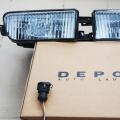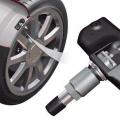It can be said with great confidence that among experienced drivers who have just received a "driver's license", there are those who hear about it for the first time. For the majority of car owners who do not carry out maintenance and repair of their "iron horses" themselves, there is no need to know about this. For those who love tinkering and look after their car on their own, this article may be helpful.
What is meant by toe and camber of the front wheels.
When the camber and toe-in of the wheels on the car is installed correctly, all the recommendations of the vehicle manufacturer are followed, this will provide good stability when driving on any roads. The rubber will wear evenly over the entire area of the wheel, the control will become easy and reliable.
Collapse is understood as the position of the wheel in relation to the road. The normal position is when the top of the wheel is tilted outward. This value is determined by the factory and has a certain value for different car models. Bad for the car and for the wheel itself, when the inclination of its upper part is directed inward. In this case, you have to forget about good stability and controllability, and rubber wear is greatly accelerated.
Convergence is understood as the distance between the front and rear points of the front wheel discs. Camber is measured in degrees, and wheel alignment, other than degrees, can be determined using a distance in millimeters.

When to check camber and toe.
Various sources recommend adjusting when you run about 12-15 thousand kilometers, or once a year. Sometimes there are times when you have to perform such an operation ahead of schedule. The reason for this, in most cases, is the condition of our roads. It is enough to “catch” a good pothole once, so that it becomes necessary to check and adjust the camber and toe-in of the front wheels.
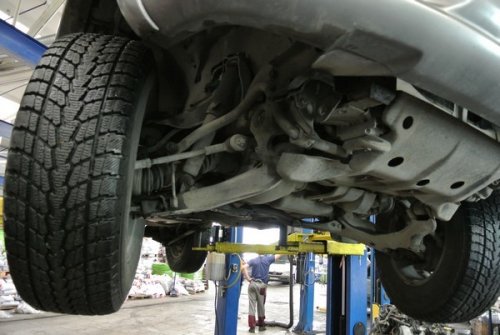
If the owner plans to operate his car for a long time without any problems, then it is not worth saving on this operation. After each replacement of ball joints, silent blocks, steering rods, shock absorbers, it is necessary to check and adjust the camber and toe-in of the wheels.
It is quite simple to perform this operation today. You just need to call in a service that performs such an operation, and specialists will quickly and efficiently perform this work. But there are times when such work must be done independently in a garage.
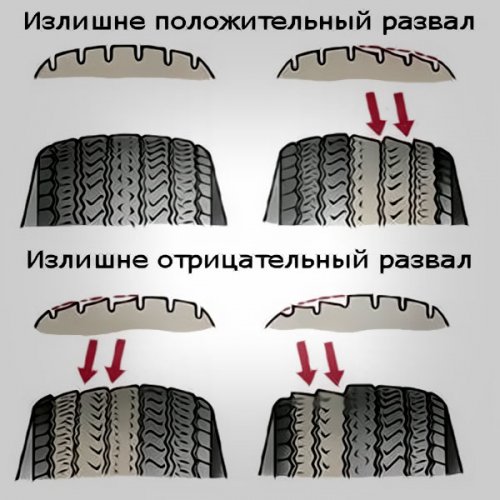
We carry out the camber and convergence on our own.
We will not repeat the importance of this operation. This process is important and must be taken seriously. To complete it, you need a tool and accessories:
- The presence of a viewing hole.
- Plumb line.
- Chalk or felt-tip pen.
- A set of keys.
- Sliding ruler with scale.

The operation of checking and adjusting the camber and toe for cars with front-wheel drive and "classic" have some differences. To perform this operation at home, it is necessary to ensure that there is a flat, horizontal platform. Checking and adjustment is carried out in several stages:
- The car is installed on the site in such a way that the front wheels are straight. On the outside of the tire, two marks are applied, one at the top and the other at the bottom.
- A plumb line is applied to the wing in such a way that it is in the plane with the marks applied. Next, using a vernier caliper or other measuring tool, measure the distance from the cord to the wheel disk near the upper and lower marks. If the difference is about 3 millimeters, that's fine.
- Next, you need to turn the wheels by rolling the car forward so that the applied marks are located horizontally.
- Again, measurements are taken from the cord to the wheel rim in the vertical plane.
- To obtain more accurate measurement data, this operation must be performed several times.
The difference in dimensions between the upper and lower marks for front-wheel drive vehicles should be no more than 1 mm, and for the "classic" - 3 mm. If the obtained measurement results do not fit into these standards, adjustments are made. In front-wheel drive cars, the desired result is obtained by shifting the rack forward or backward, and in the "classic" add or remove the adjusting washers of the lower arm of the front suspension. If the "classic" in the front suspension has a MacPherson strut, the strut is also moved to adjust.
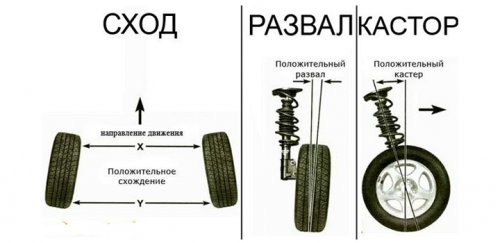
Toe-in is checked using a sliding ruler. To do this, two marks are made on the inside of the wheels in front of the vehicle and the distance is measured. Next, you need to roll the car in such a way that the marks are in the back of the car. The measurement taken between the marks should be approximately 1 mm larger than the previous one. This can be achieved by turning the steering rods.

I would like to remind you that such self-adjustments are temporary, therefore, do not postpone for a long time checking on the special equipment of the front suspension of the car.


